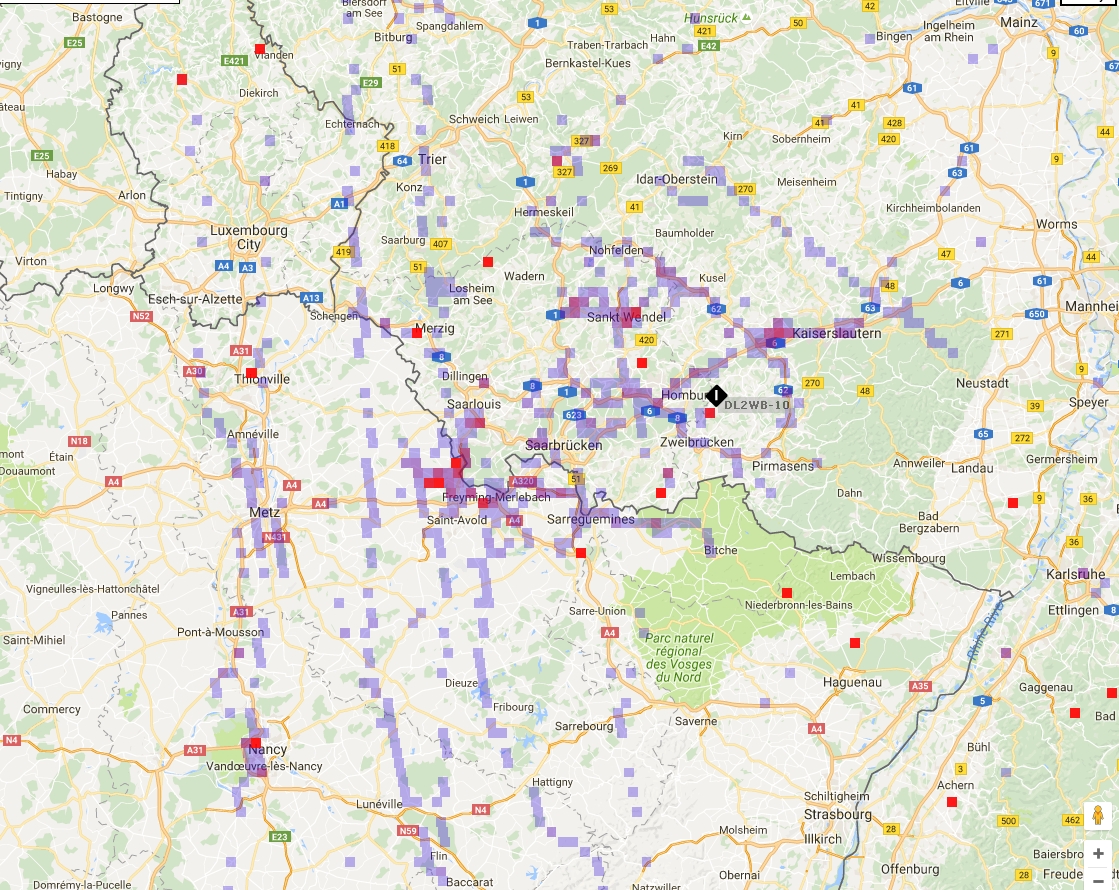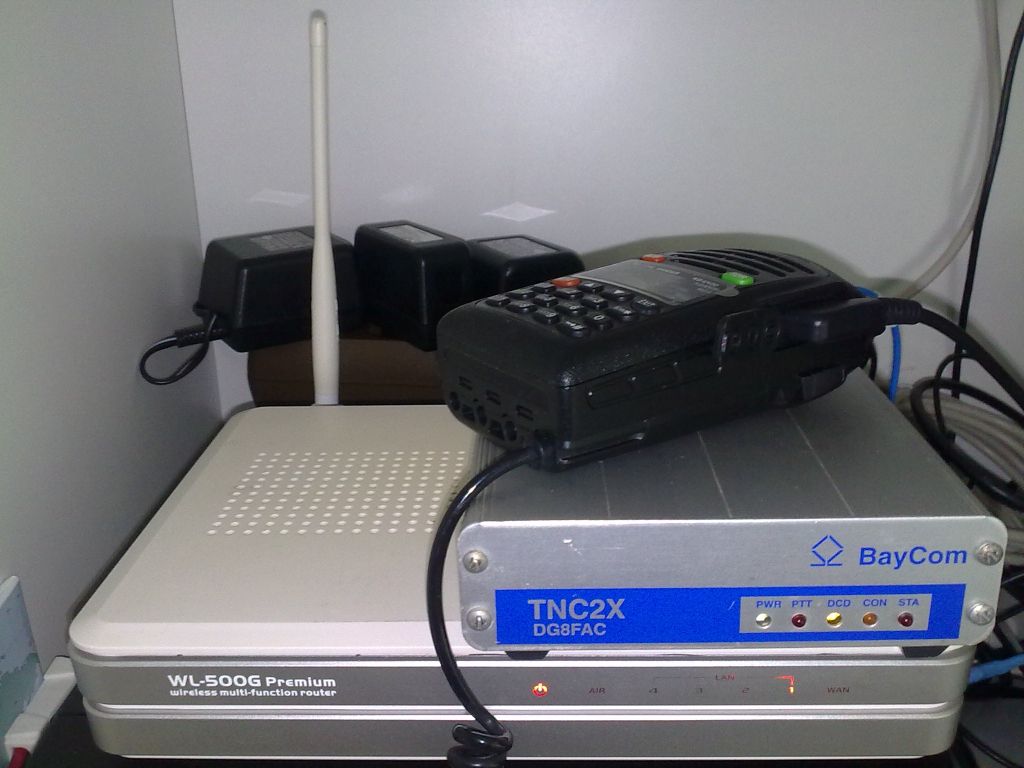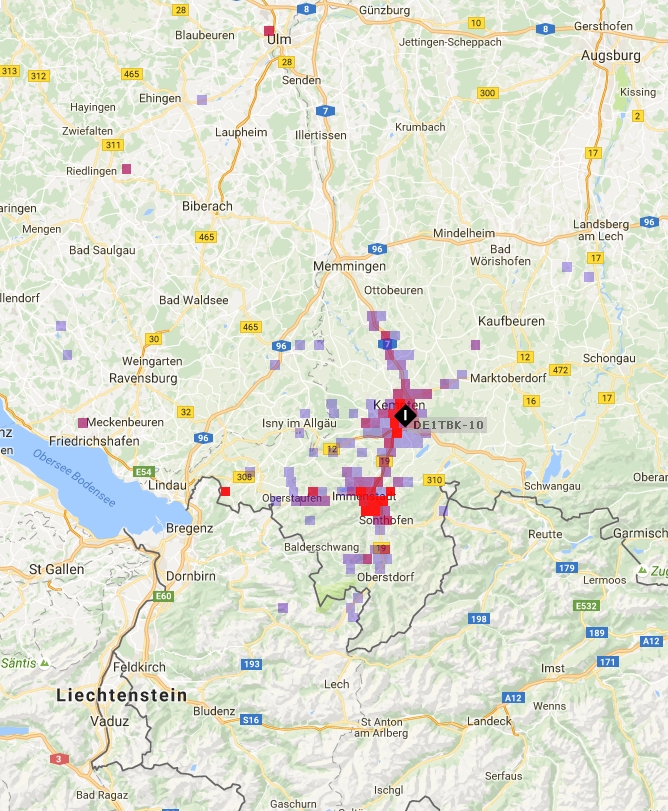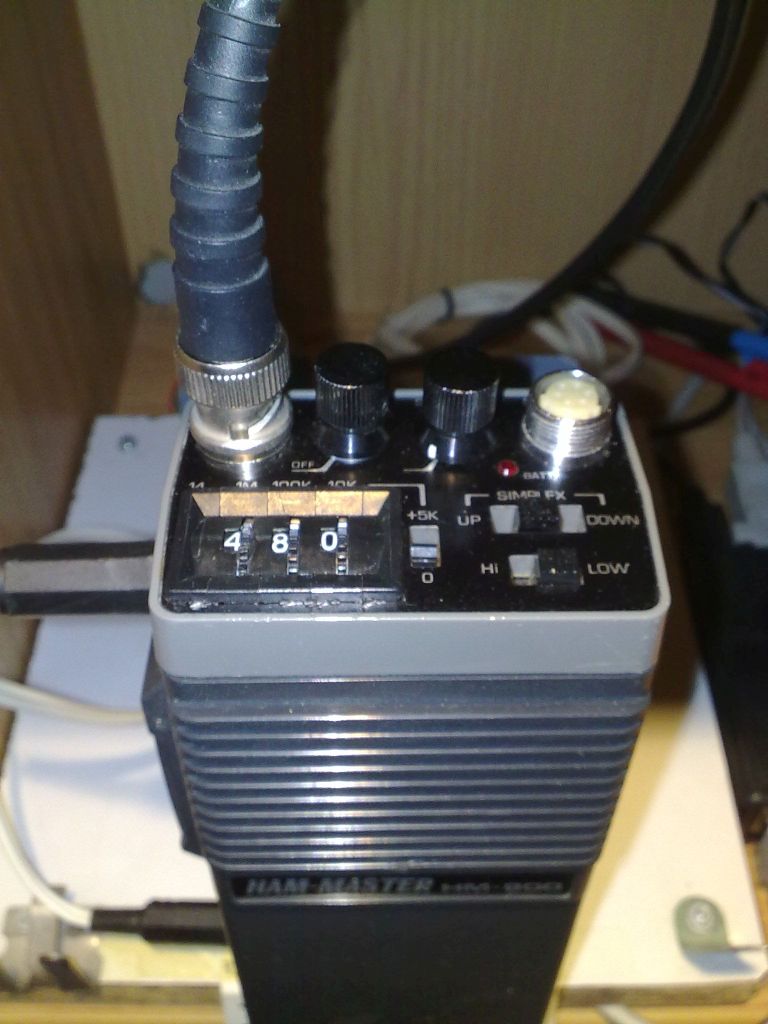
A second IGATE is set up in my flat in Kempten/Bavaria.
The first implementation used an Asus WL-500G Premium Wifi router, a vintage TNC2X and my handheld transceiver:

RF coverage is promising, as my flat is in the 6th floor with good propagation toward the west:

In the meanwhile the Wifi router has been replaced by a Raspberry Pi.
The main reasons are the massive conducted and radiated emission produced by the Wifi router itself.
Running the router, the RF spectrum up to 20 MHz was unusable.
The Raspberry Pi proved to be critical in the frequency range below 1 MHz only.
